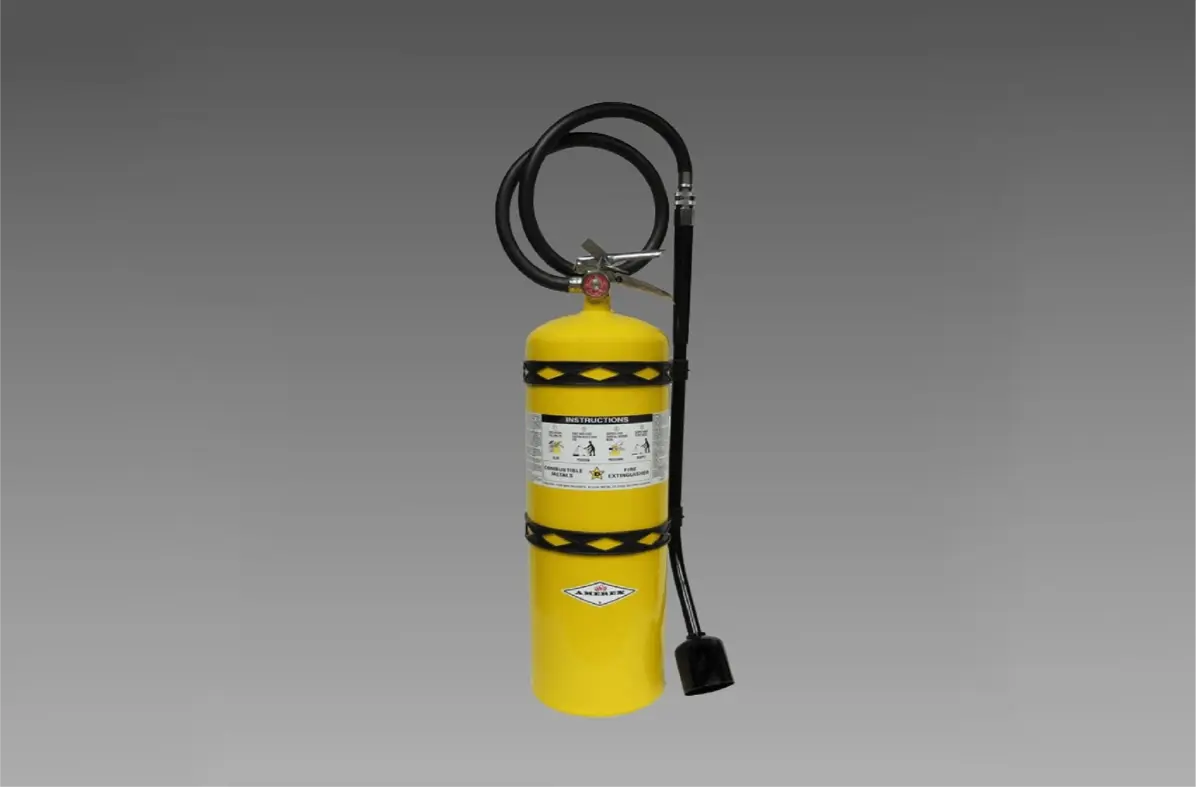
Wet Chemical Fire Extinguishers
are designed for safely extinguishing cooking oil and fat fires, commonly found in commercial kitchens and the food industry.
Best for Classes of Fire: A, B
Class D extinguishers are for covering a unique risk which is burning metals, and this is something which is becoming more frequently amongst us with the vast amount of battery-operated equipment around us and the huge amounts of lithium.:

Class D fire extinguishers are specifically designed for fires involving combustible metals, including magnesium, titanium, potassium, and sodium. These types of fires occur mainly in industrial facilities, laboratories, and manufacturing environments where metal shavings, dust, or powders can ignite
Unlike standard extinguishers, Class D extinguishers contain specialized dry powder agents, such as M28 and L2, which effectively smother metal fires by forming a barrier that prevents further combustion.
Combustible metals burn at extremely high temperatures and react aggressively with water or CO2-based extinguishers, making conventional fire suppression methods ineffective or even dangerous. Class D extinguishers provide the safest and most reliable solution for controlling such fires.
There are two primary types of Class D fire extinguishers based on the powder agent used:
Both extinguishers utilize a low-velocity lance, ensuring the powder is applied gently without spreading burning metal particles.
Class D fire extinguishers are essential in industries where combustible metals are processed or stored, including:
Using a Class D extinguisher requires specific handling due to the nature of metal fires:
Unlike ABC fire extinguishers, Class D extinguishers should not be used with high-pressure discharge, as it may disperse the burning metal and worsen the situation.
Contact us now to learn more about Class D Powder Fire Extinguishers and how they can be an essential part of your fire safety plan.
Class D extinguishers contain dry powder agents specifically designed to suppress metal fires. Unlike water, foam, or CO2 extinguishers, they prevent combustion without reacting violently with metals
No. Class D extinguishers are intended for metal fires only. For electrical fires, CO2 or dry powder (ABC) extinguishers are recommended.
Metals like magnesium, titanium, sodium, potassium, and certain alloys are considered combustible and require the use of Class D fire extinguishers.
Class D fire extinguishers work by smothering the fire and preventing the metal from reacting with oxygen. They often contain dry powder agents, such as sodium chloride or powdered graphite, which create a barrier to inhibit the chemical reactions that sustain the fire.
Class D fire extinguishers are commonly found in industrial facilities, laboratories, and locations where combustible metals are present. This includes places where metalworking, machining, or other processes involving combustible metals take place.
Yes. Like all fire safety equipment, Class D extinguishers must be inspected regularly to ensure they are fully operational. This includes checking pressure levels, verifying powder integrity, and scheduling professional servicing when necessary.
Don’t hesitate to reach out to us, or you can easily fill out the form below. We’re here to assist you.


are designed for safely extinguishing cooking oil and fat fires, commonly found in commercial kitchens and the food industry.

work on various fires, including liquids and electrical equipment, by emitting a cooling mist to suppress and contain the fire.

are used to put out fires in wood, paper, and similar materials. They work by cooling down the fire and